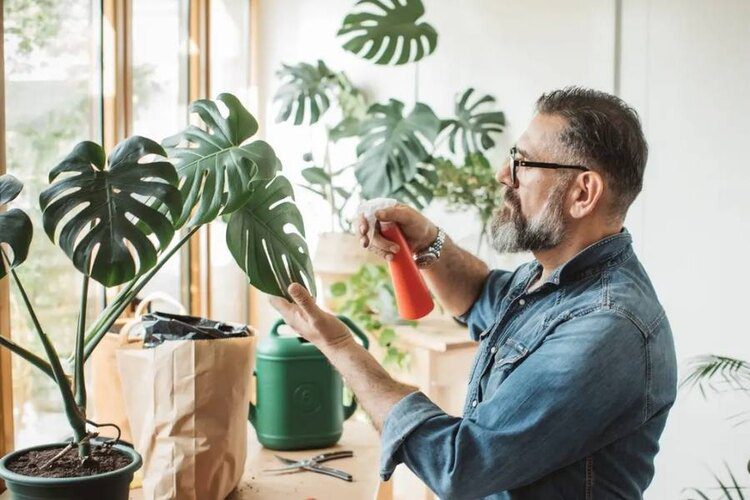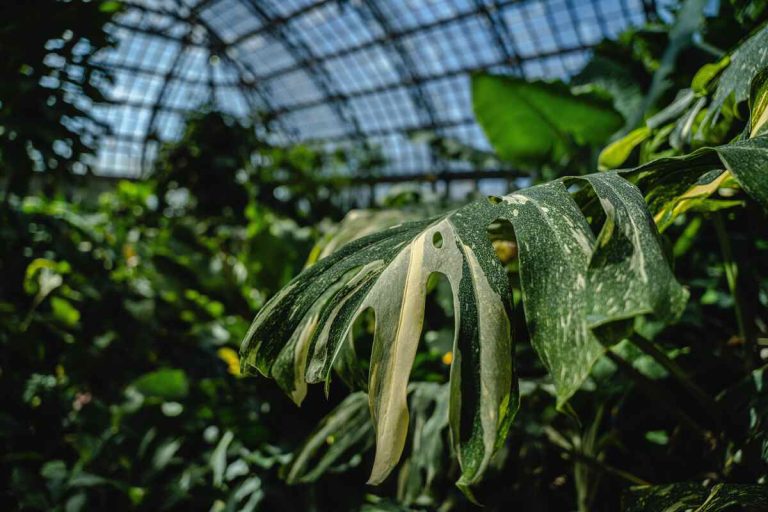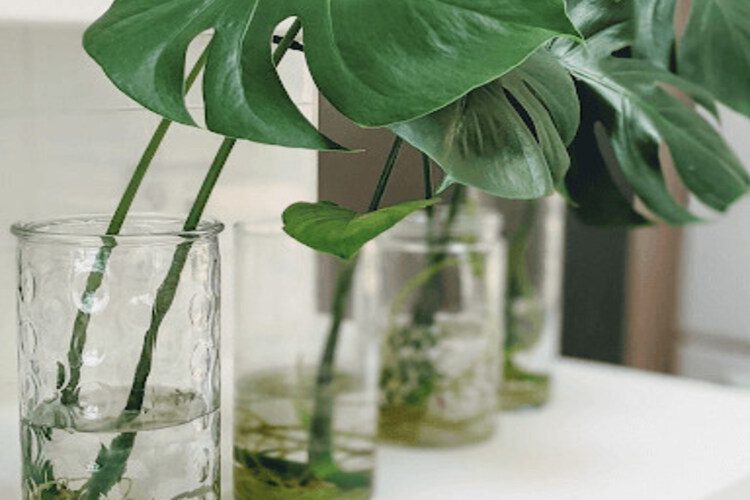What Are Brown Spots On Monstera: How To Save Your Plant?

Monstera is a well-known houseplant with its glossy green foliage and ability to grow quickly. The best indication that your Monstera plant is doing well is when it starts to produce enormous, glossy green leaves.
But if you see brown spots on Monstera, don’t panic. There are many reasons why these brown spots appear on the leaves, but if you detect them in time and take the proper treatment, your Monstera plant will still be healthy. Here’s some helpful information.
What Causes Brown Spots On Monstera?
As mentioned, there are many possible reasons for the appearance of brown spots on the leaves of Monstera plants. Accordingly, your plant will need different treatments for different reasons. Please refer to the information below.
Leaf diseases

Bacteria rapidly damage the entire leaf, unlike fungus, which only affects a few areas while the rest of the leaf is healthy. The plant will wilt and turn brown as a result, and it may even spread to other areas of the plant. The golden ring that encircles the brown spot can also be a clue.
Any bacterial or fungal leaf spot disease needs to be treated right away. As soon as you find any sick stems or leaves, remove them. Contaminated compost can potentially cause brown spots on Monstera’s leaves. You must not compost contaminated scraps since the pathogen might live there for many years. Fungi can thrive in warm and moist conditions, making compost an ideal environment for growth.
To solve the illness, you should burn the afflicted plant pieces or throw them away with household trash and clean the cutting edge. The initial stages of an infection can also be treated with approved copper fungicides to fight against fungal diseases. Maintaining proper plant care practises and taking appropriate action when seeing leaf diseases can help prevent and treat these spots on Monstera plants.
Excess lighting
Long-term exposure to light’s UV wavelengths can be damaging to plants. When the light is too strong, plant cells have the propensity to burn. Large brown blotches appear on the surface of the leaves as a result. The level of internal cell damage determines the size of the burn. Excessive lighting can also cause dehydration in Monstera plants, leading to brown spots on the leaves. When exposed to too much light, the plant can dry out more quickly, causing the leaves to become dry and brittle.
In this case, you should move the plant to a cooler place and water it if the soil is too dry. You should also remove the burned leaves to prevent them from spreading to other leaves.
Unstable temperature and humidity
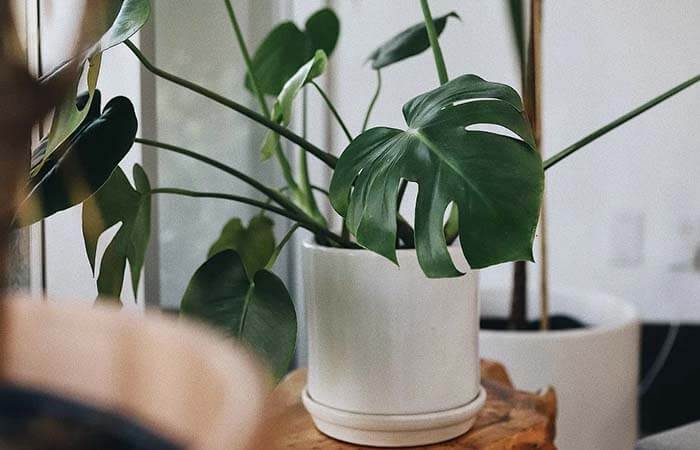
Temperature fluctuations can cause brown spots on Monstera’s leaves by disrupting the plant’s ability to absorb and transport water and nutrients. These spots on the leaves may be caused by the temperature in two different ways.
The Monstera may experience heat stress in a hot and dry environment, which could cause the plant to wilt. The leaves start to display brown or black patches when the weather becomes extreme. As a result of coming into contact with chilly windows or drafts when it is frigid, Monstera leaves may develop white spots. After that, these blotches would appear black. Humidity, mainly when it is high, is a factor in the proliferation of pathogens. In a damp environment, these creatures flourish. The primary cause of brown or black patches on leaves is pathogens like fungus.
Keep the plant at the right temperature and humidity, and keep it away from drafts and heating or cooling vents. If necessary, you can use a humidifier to increase the humidity levels around the plant. It’s also important to avoid overwatering and allow the soil to dry out slightly between waterings, as excessive moisture can lead to fungal and bacterial infections.
If you notice your Monstera plant drooping, it is a sign that it is not getting enough water. The leaves may also start to turn brown. To revive the plant, water it thoroughly and place it in a bright, indirect light location.
Fertiliser problems
It’s acceptable to fertilise the Monstera plant to maintain its rich, robust appearance. The extra nutrients in the soil will no doubt benefit your plant. However, the plant will suffer from any excess activity. Consider using fertilizer, but be sure to follow the directions on the label carefully. Fast-release fertilisers can burn cells when added in excess due to salt buildup. Osmotic stress, which results in water leaving the cell quickly, will be caused by too much salt close to the roots. When this happens, cells are left to shrink and die. Due to how quickly it works, brown patches will form on the leaves in one to two days.
To solve the issues, you should periodically flush the soil with water to remove any excess salts or nutrients that may have built up over time. Slow-release fertilisers can be an alternative if you can not control the amount of fertiliser. Therefore, changing the plant’s soil or moving the plant to a fresh soil-filled pot can be a good solution. The plant will remain robust and healthy in organically rich, well-amended soil. Fertiliser use will decrease if nutrients are made sufficiently available in the soil.
Watering problems
Watering problems can significantly impact the development of brown spots on Monstera leaves. Overwatering or underwatering can lead to brown spot issues and other leaf discolouration.
Overwatering your plants will cause root rot, compromising the transfer of nutrients and water. Before you realise it, the plant’s leaves have developed brown blotches all over them. The leaves gradually become yellow and brown. In addition, sweating on Monstera can also occur due to overwatering. Underwatering can also cause brown spots on Monstera leaves, causing the plant to become stressed and weakened. When the plant does not receive enough water, it may start to draw moisture from the leaves, causing them to become dry and brown.
Thus, always make sure the water has completely drained. You can use a hose to make sure the pot is thoroughly watered. Fill the pot with water from top to bottom to evenly moisten the soil.
How To Prevent Brown Spots On Your Monstera
Plants experience the various pressures they encounter because they are living things. To stop brown spots from tarnishing the leaves of Monstera plants, you must avoid or at least reduce these pressures. Here are a few tips you can take to keep your Monstera leaves from developing brown spots:
Provide enough light
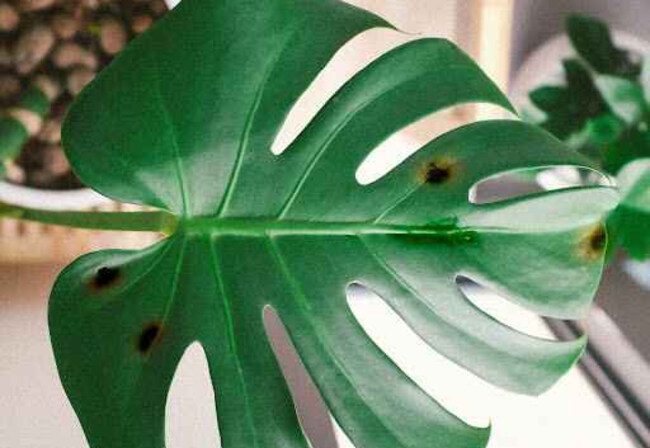
Monstera plants require bright, indirect light to grow well. The ideal spot for a Monstera plant is where it can receive bright, indirect light for most of the day. You can also use a grow light to supplement the natural light if needed.
Since it is an indoor plant, it does well in that setting. Avoid exposing the Monstera to direct sunlight. Or, if you do, be careful not to leave it out too long. There is no use in subjecting this plant to the harsh elements outside because its lighting requirements are indirect light for photosynthesis. This is a problem of Monstera plants that you can solve easily.
Moderate temperature
Your Monstera will undoubtedly benefit if you regularly use an air conditioner throughout the summer. Because of the additional coolness, heat stress-related brown patches on the leaves won’t appear. You should also prepare insulation or an air conditioner for the winter.
Control watering application

Huge indoor plants like Monstera require a lot more water. When the soil is at least 50 to 70 percent dry, water the plant twice to thrice weekly. In addition, you should also use clean water to water the plants; this helps reduce the possibility that bacteria will affect the plants through dirty water.
Conclusion
The fact that Monstera is often a large indoor plant makes caring for it more difficult. Its leaves having brown patches on them will undoubtedly cause alarm. You might be unsure that your Monstera will be a success. However, if you have a thorough awareness of the aforementioned elements, you’ll be able to manage them effectively.
FAQs


